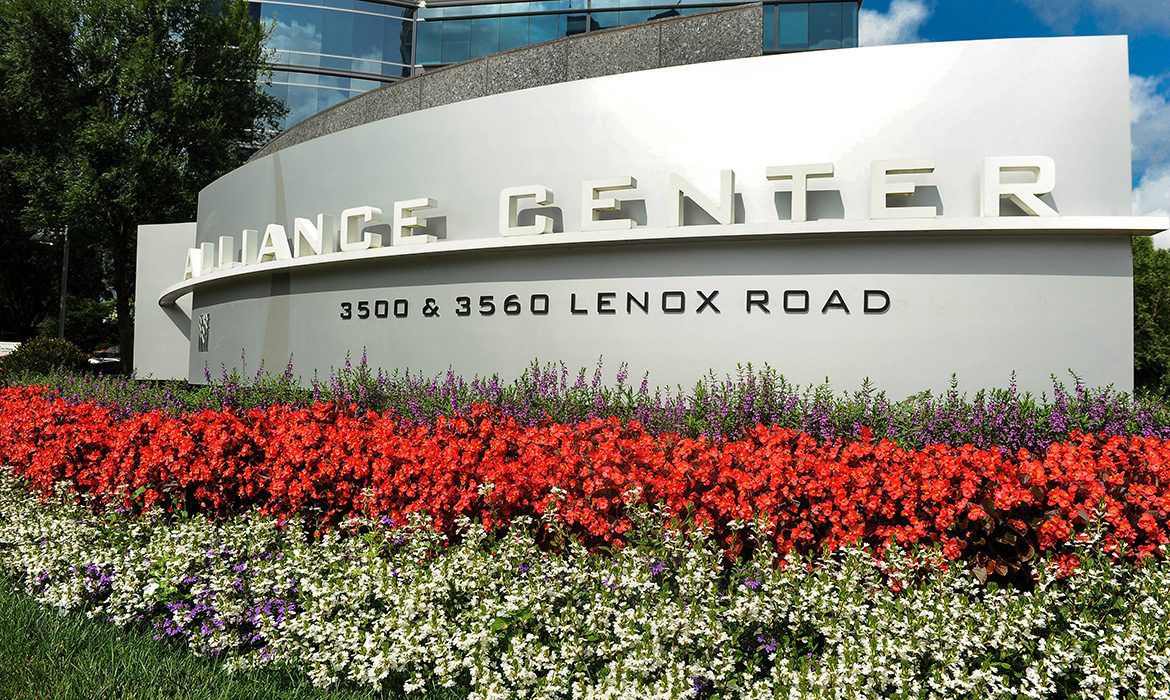
Location: Atlanta, GA
Project Scope: Maintenance of 9,000 annuals, 500 perennials/grasses/shrubs; ½ acre of turf and 50 trees as well as mulching, edging, soil management, turf management, pruning, mowing, stormwater retention pond maintenance, irrigation, and several significant enhancements.
Maintained By: Lilburn, GA Landscape Management Branch
Industry Awards Won: National Association of Landscape Professionals (NALP) 2017 Merit Award, Landscape Contractors Association (LCA) 2017 Grand Award
Site Description: Situated in the heart of Buckhead, Atlanta’s top business district, Alliance Center is comprised of two first-class office buildings with spectacular city views: the 20-story One Alliance Center, and the LEED-certified 29-story Two Alliance Center. With immediate access to major thoroughfares including a major interstate and public transit, Alliance Center is also within walking distance of upscale retail establishments, fine dining, and five-star hotels. The tenants and their 2,500+ employees have access to a number of on-site amenities including a conference facility, collaborative lounge, covered parking, fitness center, a restaurant, two cafés and more. Ultimately the owner/property management company wanted to enhance this 15-year-old landscape, addressing some challenges with its plant palate while providing the high-class, full-service feeling that tenants experience inside the buildings in the landscape as well.
Challenges & Solutions: Microclimate challenges include an urban heat island effect due to the reflection from the glass buildings and heat radiated from the granite stairs and asphalt roadway. Crews closely monitor moisture levels and adjust irrigation as needed to keep turf and plants hydrated. There is also a wind-tunnel effect between buildings that picks up debris from nearby construction and trash from outdoor seating areas, necessitating that the contractor clean-up beds and streetscapes using hand-held vacuums, outdoor litter push vacuums, and trash grabbing tools.
Ongoing site construction also caused challenges. Irrigation lines were broken on several occasions, causing the system to be inoperable for four months, requiring crews to hand-water plant beds for 10 hours each week. Utility and electrical contractors and their equipment also compacted and rutted areas of the turf, requiring the landscape contractor to repair or replace 3,000 SF of turf.
Photos & Descriptions:
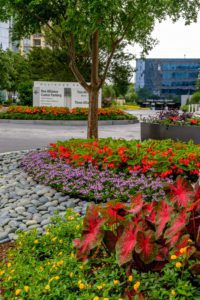 The client takes great pride in providing world-class leased office space for their valued tenants. Incentives such as sustainable features, on-site amenities and an attractive landscape all add to its curb appeal. Expectations are high on this site and the client is very involved with decisions involving the landscape and its care. The landscape contractor is constantly challenged to provide new looks for portions of the site. The contractor installs at least five enhancements per year, adding new plant varieties, colors and textures to punctuate this city landscape.
The client takes great pride in providing world-class leased office space for their valued tenants. Incentives such as sustainable features, on-site amenities and an attractive landscape all add to its curb appeal. Expectations are high on this site and the client is very involved with decisions involving the landscape and its care. The landscape contractor is constantly challenged to provide new looks for portions of the site. The contractor installs at least five enhancements per year, adding new plant varieties, colors and textures to punctuate this city landscape.
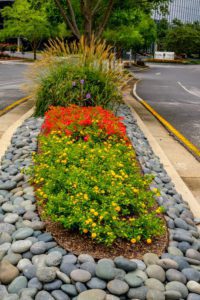 This bed, positioned at a high-visibility intersection, requires special attention. Watering, fertilization and fungicide applications help to keep it viable and crews attend to its maintenance first thing, 6:30 a.m. to decrease risk associated with traffic. There is increased focus on safety throughout the site, wearing vests, eye and ear protection and using traffic cones in high-traffic areas such as this.
This bed, positioned at a high-visibility intersection, requires special attention. Watering, fertilization and fungicide applications help to keep it viable and crews attend to its maintenance first thing, 6:30 a.m. to decrease risk associated with traffic. There is increased focus on safety throughout the site, wearing vests, eye and ear protection and using traffic cones in high-traffic areas such as this.
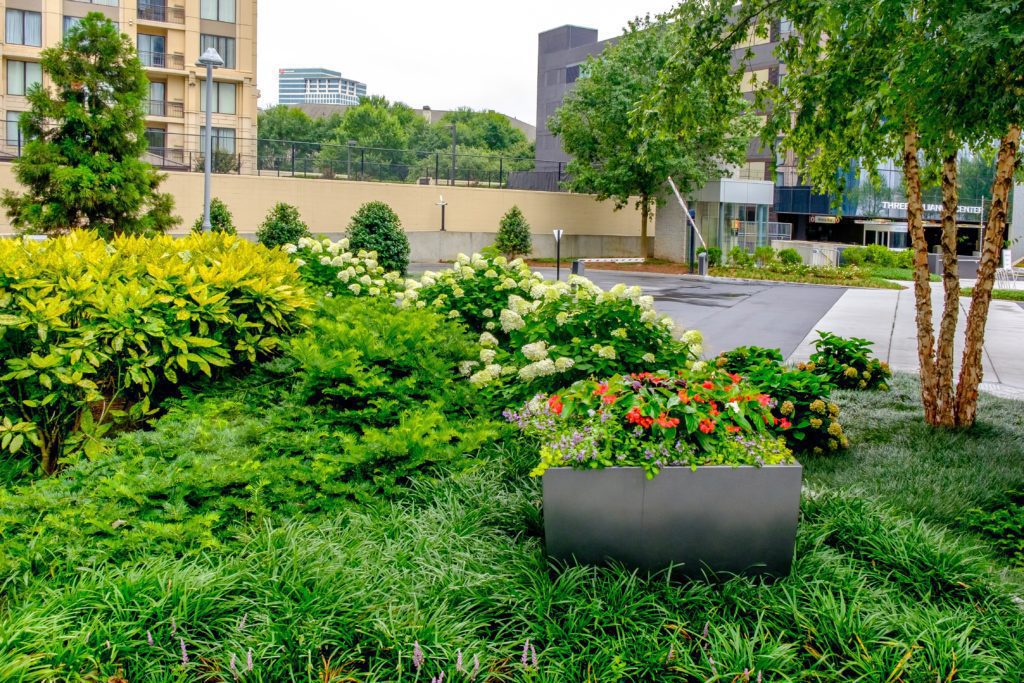
17 seasonal color beds, each about 100 SF, and 12 large flower pots help create visual interest throughout the site.
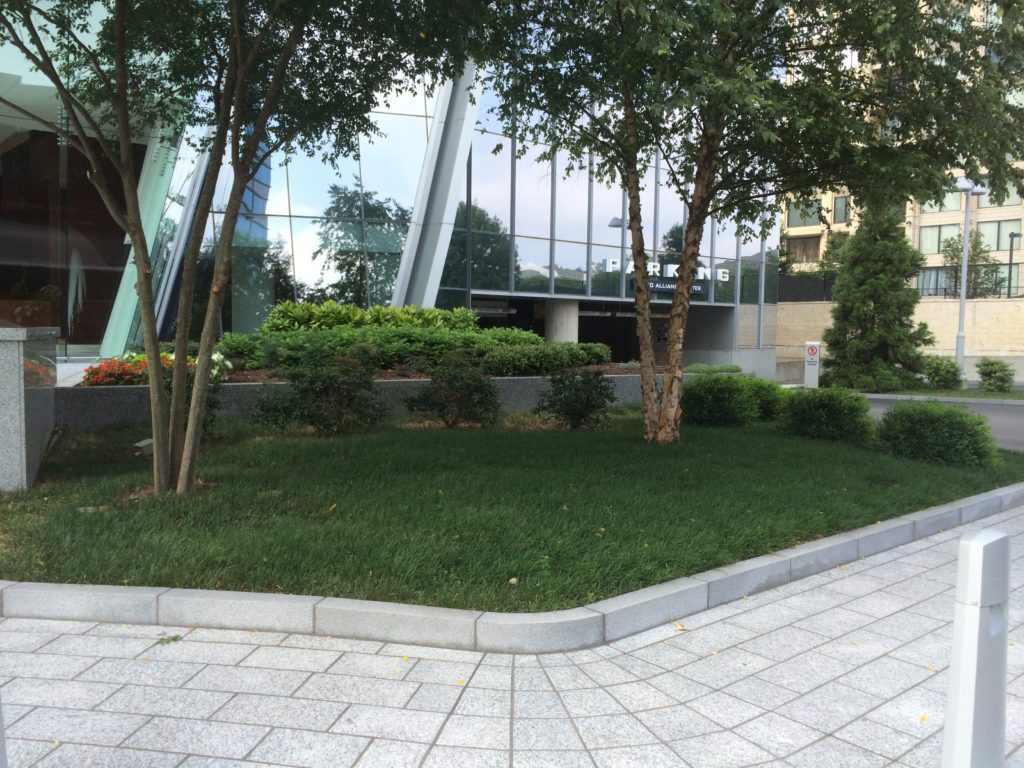
The contractor assumed the care of this property in 2014 (at the time this photo was taken). The client’s goal was to renovate and enhance this 15 year old landscape, which was largely green with very little color.
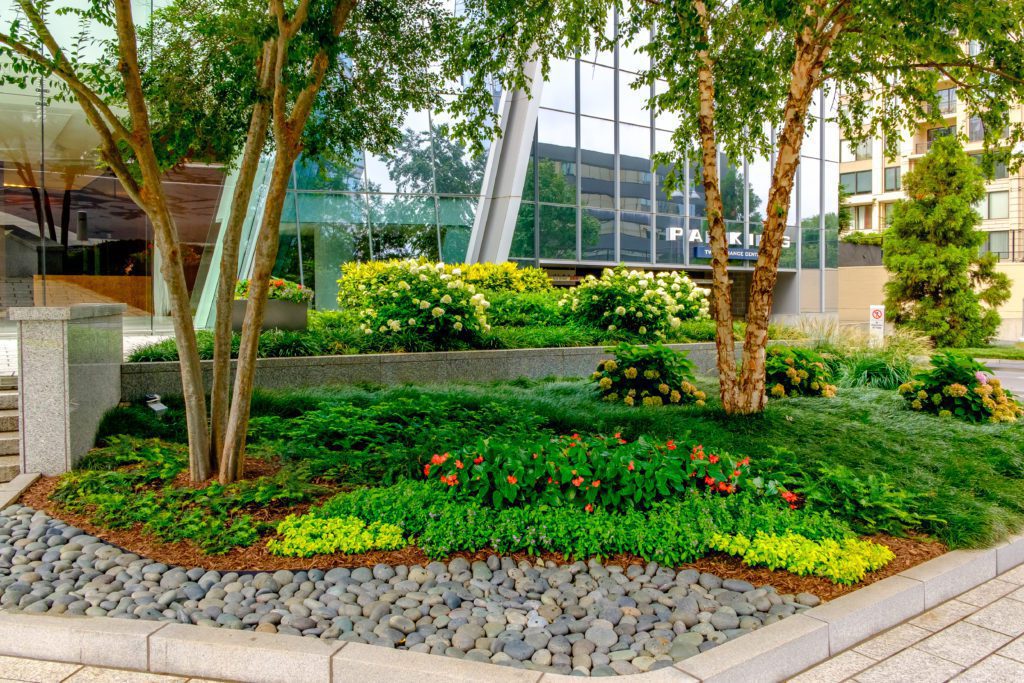
Three years later, this same bed has been transformed using a variety of textures, colors and plant heights along with the unifying beach pebble theme to create a more visually impactful landscape. To add visual interest to the site’s perennial palate, the landscape contractor installs 9,000 annuals in two seasonal color rotations per year.
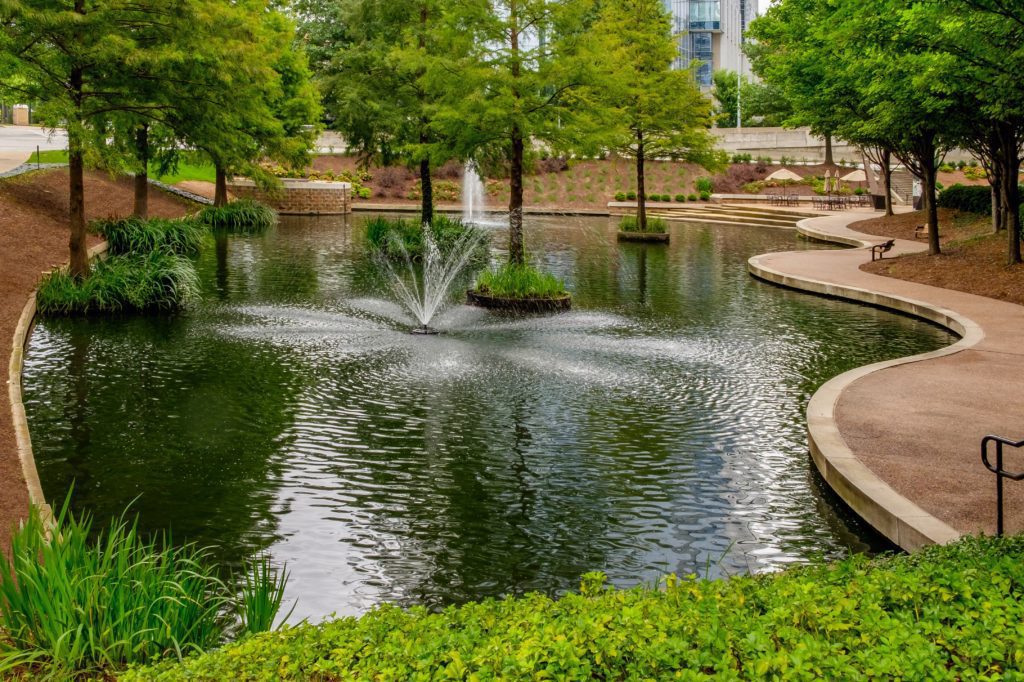
This stormwater management pond has to be both functional and aesthetically pleasing. In addition to maintaining the area around the pond, crews use a small boat to access the small planting islands, which contain bald cypress trees and iris. They venture out four to five times a year to weed, prune and mulch. The bald cypress serve a secondary function, as their roots help prevent pollutants from spreading within the pond.
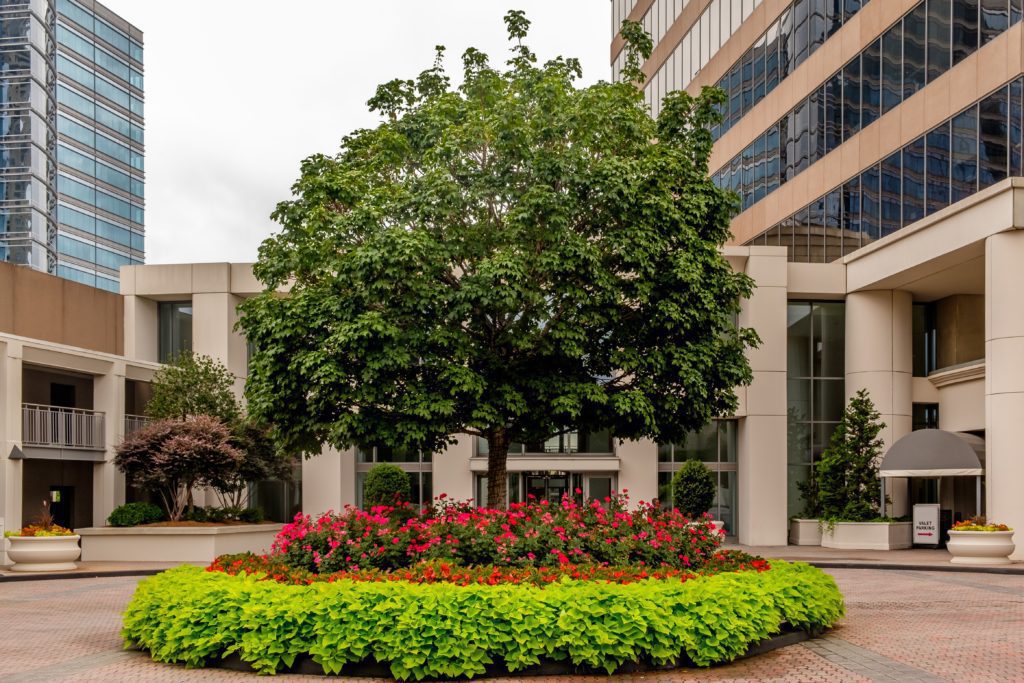
Several trees on site are 10+ years old and planted in islands surrounded by pavers. Crews regularly monitor for common diseases, such as scale on the elm trees, and follow a pest management and soil management system for these areas. Due to its shallow soil depth, these beds require frequent dead-heading, aerification (creating air space in the soil to promote a healthy root system), and deep-root fertilization twice a year to keep it vibrant.
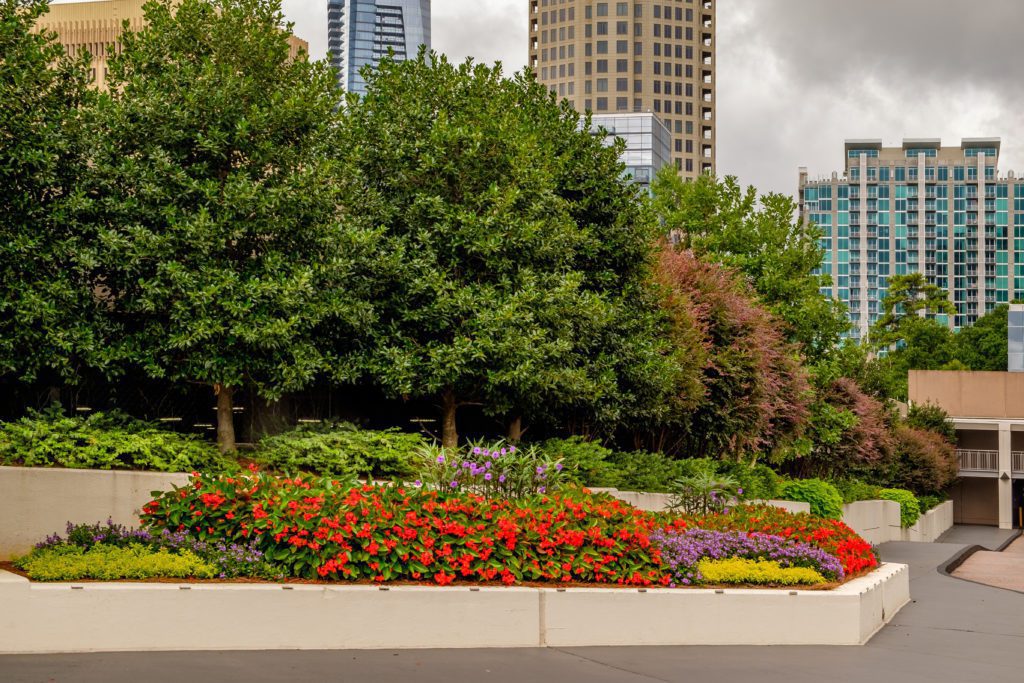
Crews spend about 40% of their time on site hand-pruning and dead-heading plant material to keep them healthy, orderly and visually appealing.
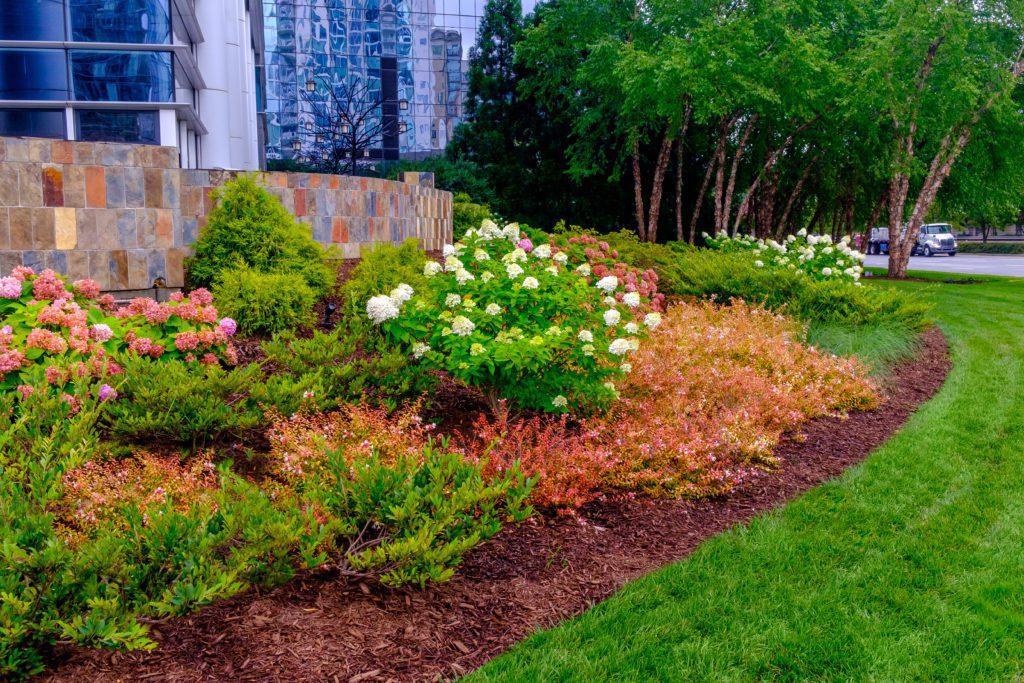
High-visibility plant beds, like this one that is adjacent to two cafés’ outdoor patios, (seen in the background lined with steel tree sculptures lit by electric lanterns) need to appear bright and welcoming. New color, texture, and plant heights were used to enhance these beds, with material like the Rose Creek Abelia, limelight and Nikko hydrangea (which offer both white and pink color), gold mop cypress, and distylium—all of which work in concert to provide visual interest.
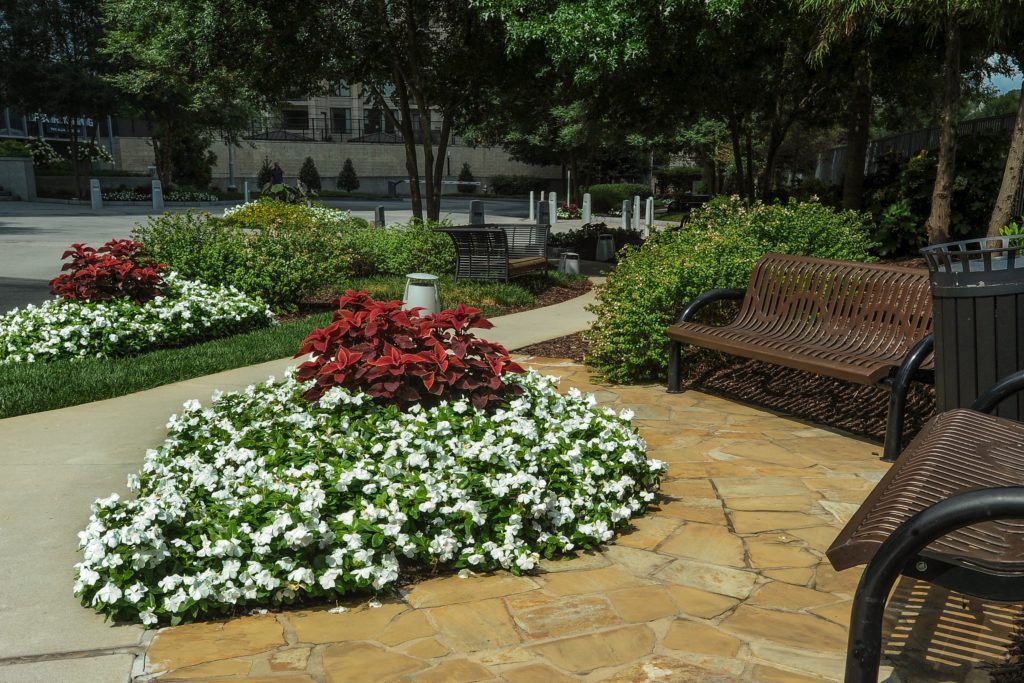
Outdoor common areas were designed to be an inviting space for employees to relax and reflect.
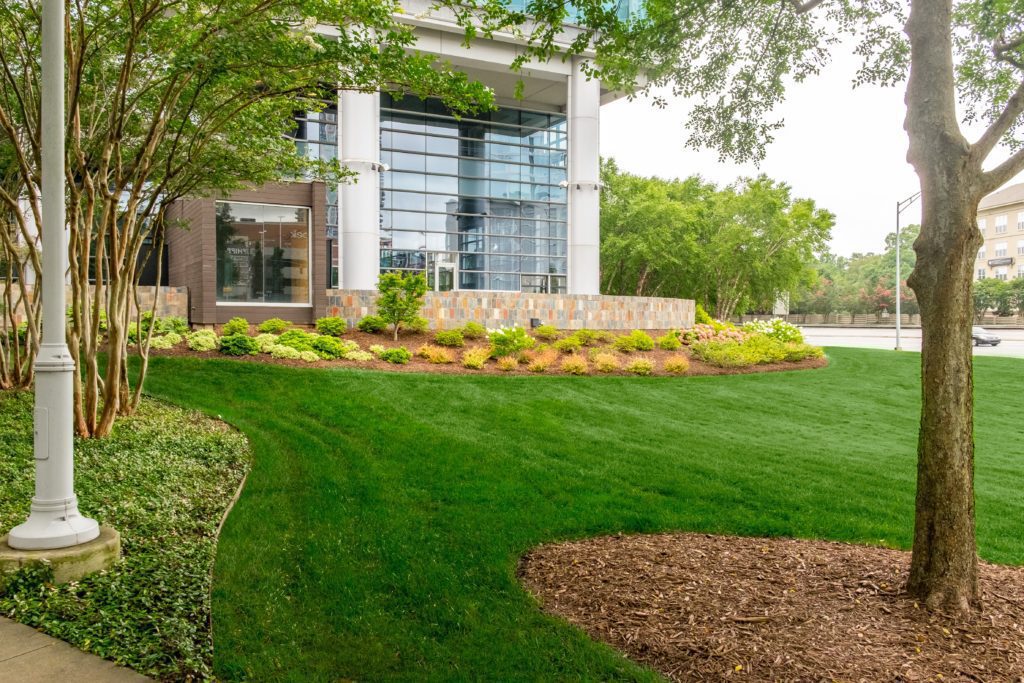
To keep the campus’s ½-acre of turf green and lush, the contractor performs five fertilization treatments with weed control, three fungicide applications, and one aeration and overseeding treatment per year.
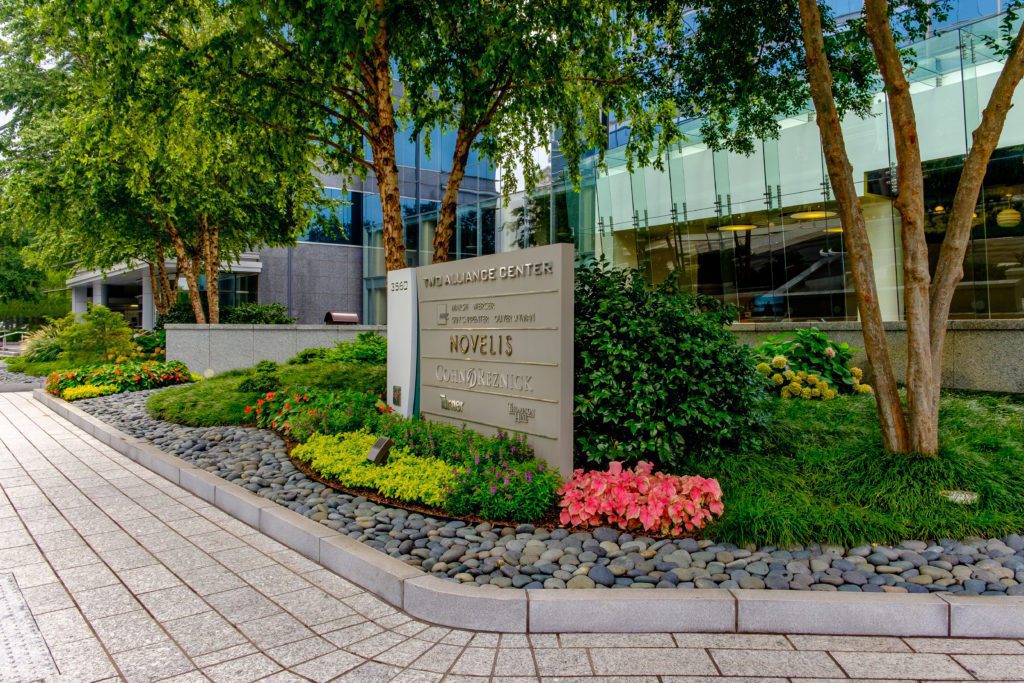
To add an element of continuity and visual interest throughout the site, Mexican Beach Pebble was used as a design element in bed enhancements to create a flowing pattern resembling a creek bed throughout the property. The customer wanted there to be shapes, forms, and colors that were evident whether a tenant was experiencing it from the parking lot or looking down from the 20th floor.
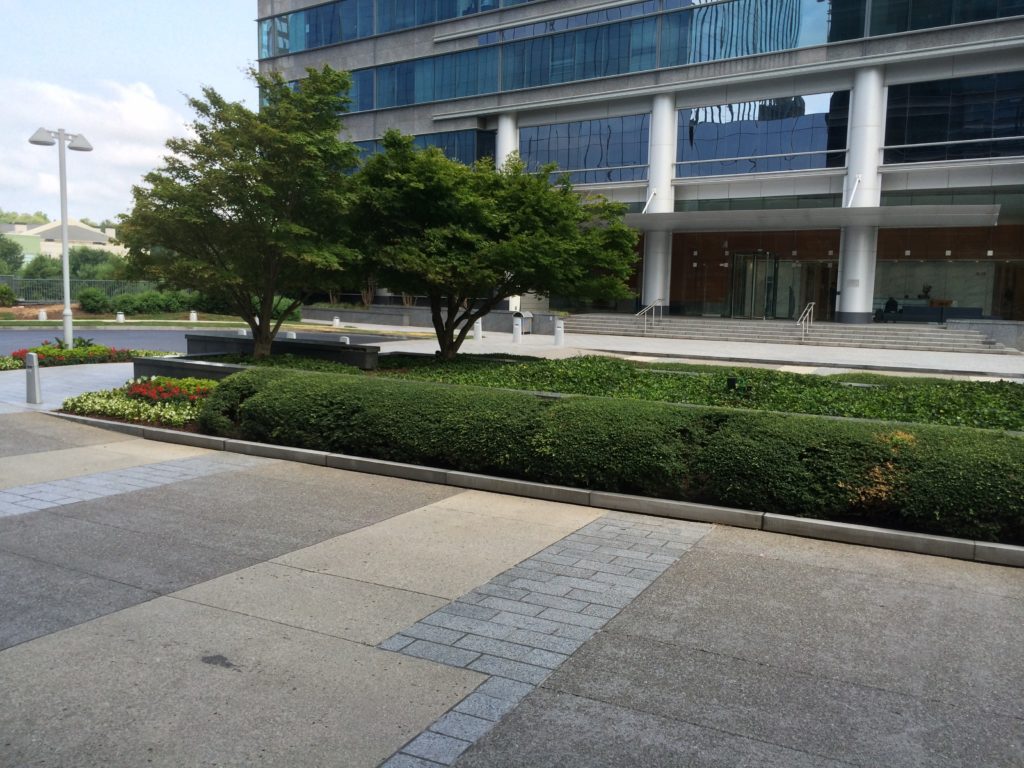
When we began the site maintenance (as pictured here), the landscape design did more to hinder the existing beauty of the property rather than enhance it (like the hedges that are hiding these stately granite-clad walls).
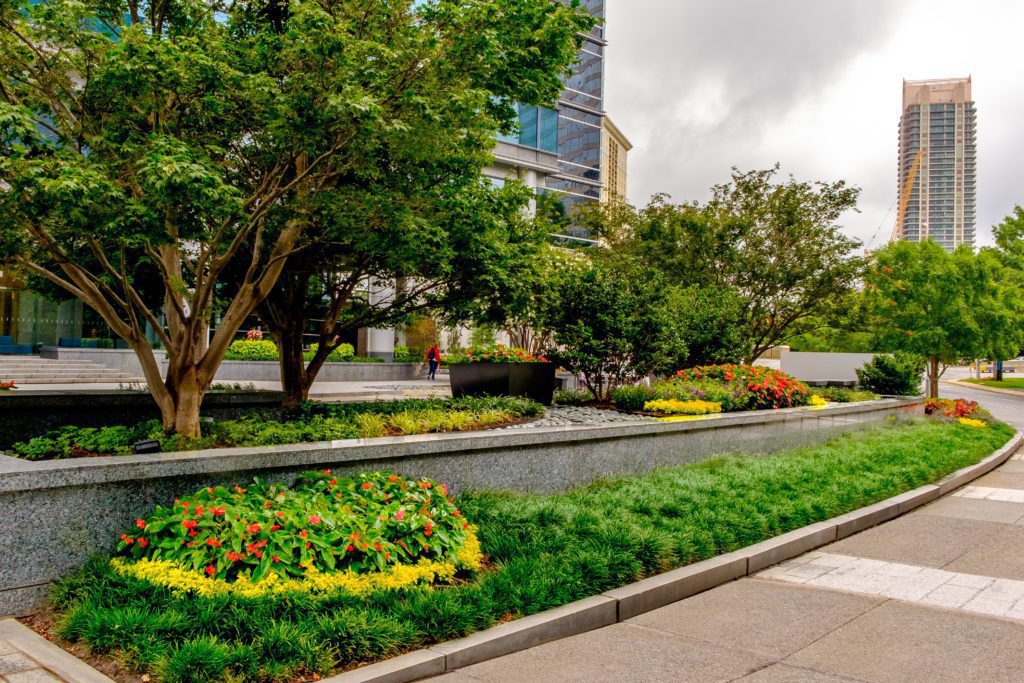
Providing a consistently high standard of maintenance in this urban landscape is challenging. But with strong communication between all parties and an eye to detail, the project is accomplishing its goal of creating a top-notch landscape for its employees.